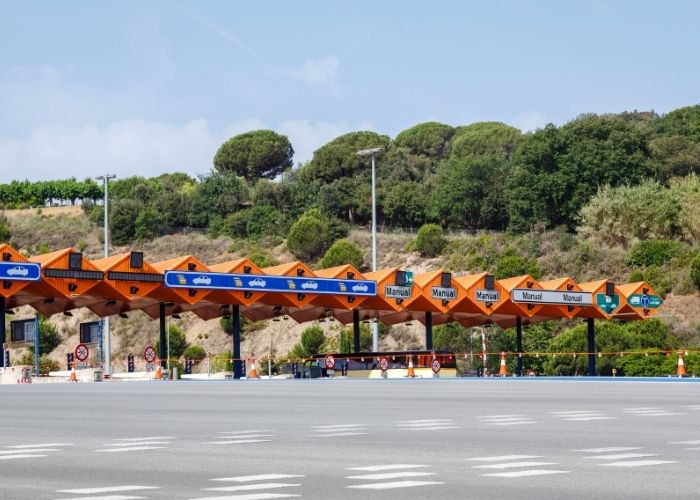MADRID – September 1st at 00.00 am: Many roads in Catalonia and Aragon will become toll-free from that moment on. In total, road users will save up to €58 euros. That is, at least until the new toll system is introduced in Spain.
From 1 September, road users no longer have to wait in front of many of the orange-colored gates. And perhaps even better; they no longer have to pay to be allowed to drive on the road. Therefore, from then there will be no more tolls on the following routes:
AP-2 between Zaragoza and El Vendrell (Province of Tarragona); the road user paid a total of €25.95 in toll for this route.
AP-7 between French-Spanish border and the city of Tarragona; the road user paid a total of €25.75 in toll for this route.
C-32 between Northern Barcelona and Lloret de Mar; the road user paid a total of €5 in toll for this route.
C-33 between Barcelona and Montmelo; the road user paid a total of €1.70 in toll for this route.
The region of Catalonia has gained more than 550 km of free roads after this change. However, it is not only the inhabitants of Catalonia who benefit from this change, people who want to visit Barcelona or the Costa Brava or Dorada from all directions from now on will no longer have to pay tolls. For example, the entire route from Madrid to Barcelona will be toll-free from September.
In 2018 also some routes toll-free in Spain
In 2018, the government of Spain also decided to exempt a number of routes from the mandatory toll. At that time, it involved a total of 652 km of the AP-1 between Burgos and Armiñon, the AP-7 between Alicante and Tarragona and the AP-4 between Sevilla and Cádiz.
Who pays for maintenance costs for public and regional roads in Spain?
The government continues to manage the state highways (AP-2 and AP-7) and has reserved €627million for the maintenance of these routes. The C-32 and C-33 will remain under the management of the Generalitat, which has reserved €23.7million for this purpose.
The Ministry of Transport expects that more cars will drive on these roads after the toll-free operation. Before the pandemic, 13,000 cars drove daily on the busiest route of the AP-2 and 50,000 on that of the AP-7. The possible increase in traffic on these roads causes faster wear of the road surface.
How will people pay for road use in Spain from 2024?
Of the 12,000 km of state roads, a toll must be paid on 2,000 km of road. The Spanish regions manage 5,200 km of motorways, of which 500 km are toll-free. Spain must have a new plan from the European Union before 2024 to finance highways.
However, the last word has not yet been said about this new approach. The Spanish news site Ondacer.es writes on Tuesday that the Generalitat has proposed a vignette; a one-off rate that the motorist pays depending on the number of days per week or months per year he uses the highway. The Spanish government would rather see a system in which ‘the polluter pays’.


